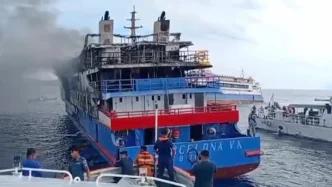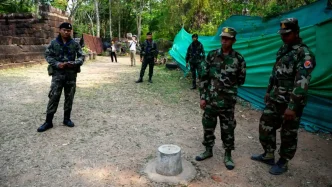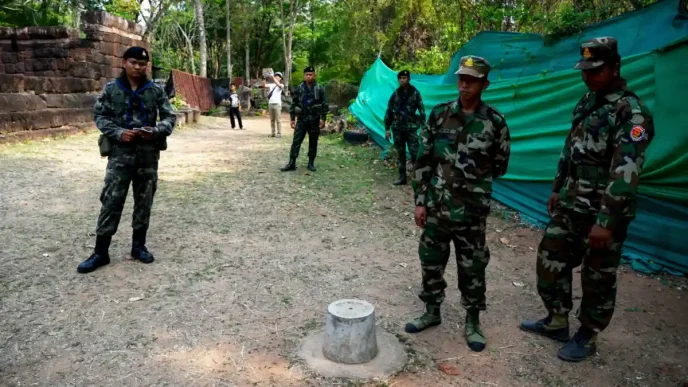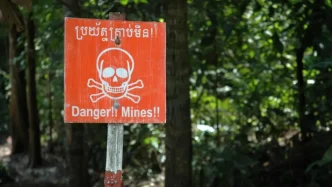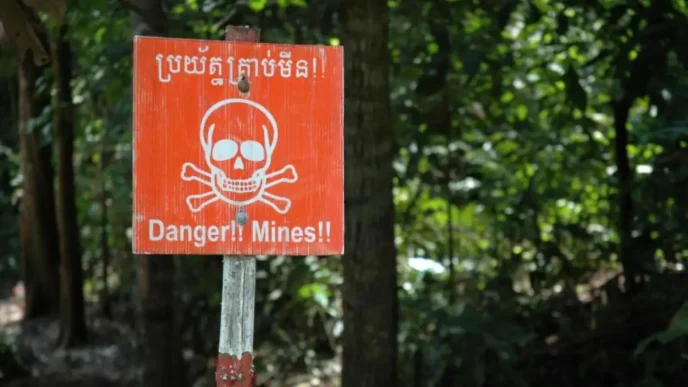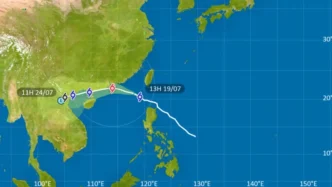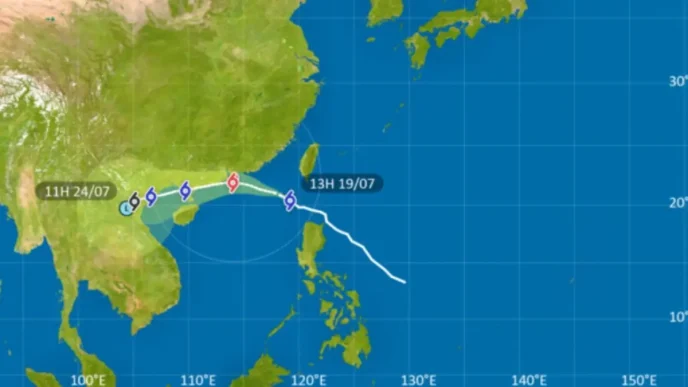A devastating bus accident in Prachin Buri province has claimed 18 lives and left 31 others injured, some seriously, reigniting concerns over the safety of double-decker buses on Thailand’s roads. The tragedy, which occurred in the early hours of Wednesday, 26 February, has prompted renewed calls for stricter regulations and a potential ban on these vehicles, known for their heightened risk of overturning.
The double-decker bus, carrying 49 passengers including the driver, was en route from Bueng Kan in northeastern Thailand to Rayong on the eastern coast when it overturned while descending a hill in Nai district at 3:09 am. Police reported that 17 victims died at the scene, while one more succumbed to injuries later at Kabin Buri Hospital. The injured are receiving treatment, with medical expenses covered by insurance amounting to a total of 10 million baht, according to Phon Charoen district chief Montri Jaruthamrong.
The bodies of the deceased were transported back to Bueng Kan province for funeral rites. Thirteen of the funerals are scheduled for 1 March at Wat Pa Wiwek Thammakhun in Phon Charoen district, while four will be held at Wat Ban Euad and one at Wat Nong Kung, respecting the wishes of the families. Montri confirmed that each family of the deceased will receive compensation of 1.05 million baht from the province and related agencies.
A Recurring Issue on Thai Roads
This tragic incident is not an isolated one. Double-decker buses, often used for long-distance travel across Thailand, have long been flagged as a safety hazard due to their design. With an elevated centre of gravity, these vehicles are particularly prone to overturning, especially on routes with steep slopes or sharp turns. A 2014 study by the Department of Highways identified seven interprovincial routes as hotspots for accidents involving double-deckers, though specific details of these routes were not disclosed in recent reports.
The Thailand Consumers Council (TCC) has been vocal about the dangers, citing a December 2024 incident in Loei province where a Bangkok-to-Loei tour bus slid into a roadside forest, killing the driver and injuring 35 passengers. According to the TCC, double-decker buses are six times more likely to overturn compared to standard buses. The council has urged authorities to phase out these vehicles, starting with routes known for dangerous terrain, and to establish an online database or mobile application allowing passengers to check a bus’s safety records, maintenance history, and insurance status before booking.
Currently, the Department of Land Transport reports that around 6,300 double-decker buses operate on Thai roads. However, critical information about their years of service, maintenance, and safety compliance remains inaccessible to the public, leaving passengers unaware of potential risks when they board.
Broader Implications for Road Safety
The Prachin Buri crash raises broader questions about road safety standards in Thailand, a country where traffic accidents remain a leading cause of death. According to World Health Organization data, Thailand has one of the highest road traffic mortality rates in Southeast Asia, with poorly maintained vehicles, inadequate driver training, and challenging road conditions often cited as contributing factors. While the exact cause of Wednesday’s accident is yet to be determined, early speculation points to the bus’s design and the downhill terrain as likely factors.
If confirmed, this could add weight to the TCC’s argument for a gradual ban on double-decker buses. However, such a move would not be without challenges. These buses are a staple of Thailand’s budget travel sector, offering an affordable means of transport for thousands of people, particularly in rural areas. Replacing them with safer alternatives would require significant investment in infrastructure and fleet upgrades, a cost that operators and the government may struggle to bear in the short term.
There is also the question of enforcement. Even if regulations are tightened, ensuring compliance across a fleet of over 6,000 vehicles would be a monumental task. Smaller operators, often running on tight margins, may cut corners on maintenance or driver training, further compounding the risks. Without a transparent system to monitor and penalise non-compliance, any new policies risk becoming mere paper promises.
Voices of Grief and Calls for Action
In Bueng Kan, the arrival of the victims’ bodies on Wednesday evening was met with scenes of profound grief. Families and community members gathered at Wat Pa Wiwek Thammakhun to mourn, grappling with the sudden loss of loved ones. Beyond the personal tragedy, the incident has sparked public outcry on social media, with many Thai netizens demanding accountability from both bus operators and regulators.
Transport authorities have yet to issue a formal response to the accident, but pressure is mounting for an urgent review of safety protocols. Some have suggested short-term measures, such as mandatory speed restrictions for double-decker buses on high-risk routes or enhanced driver training programmes focusing on handling large vehicles in adverse conditions. Others argue that nothing short of a phased ban will address the systemic issues at play.
What Next for Survivors and Victims in This Tragedy?
The Prachin Buri tragedy serves as a grim reminder of the human cost of inadequate safety measures in Thailand’s transport sector. While compensation and insurance payouts may provide some relief to the affected families, they do little to address the root causes of such accidents. If reforms are to have a lasting impact, they must prioritise both prevention and transparency—ensuring that no passenger boards a bus without confidence in its safety.
For now, the families of the 18 victims prepare to lay their loved ones to rest, while the nation watches to see if this latest disaster will finally spur meaningful change. As the debate over double-decker buses intensifies, one thing is clear: the stakes could not be higher.



